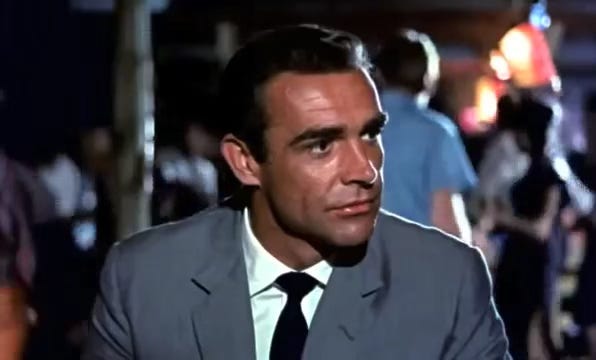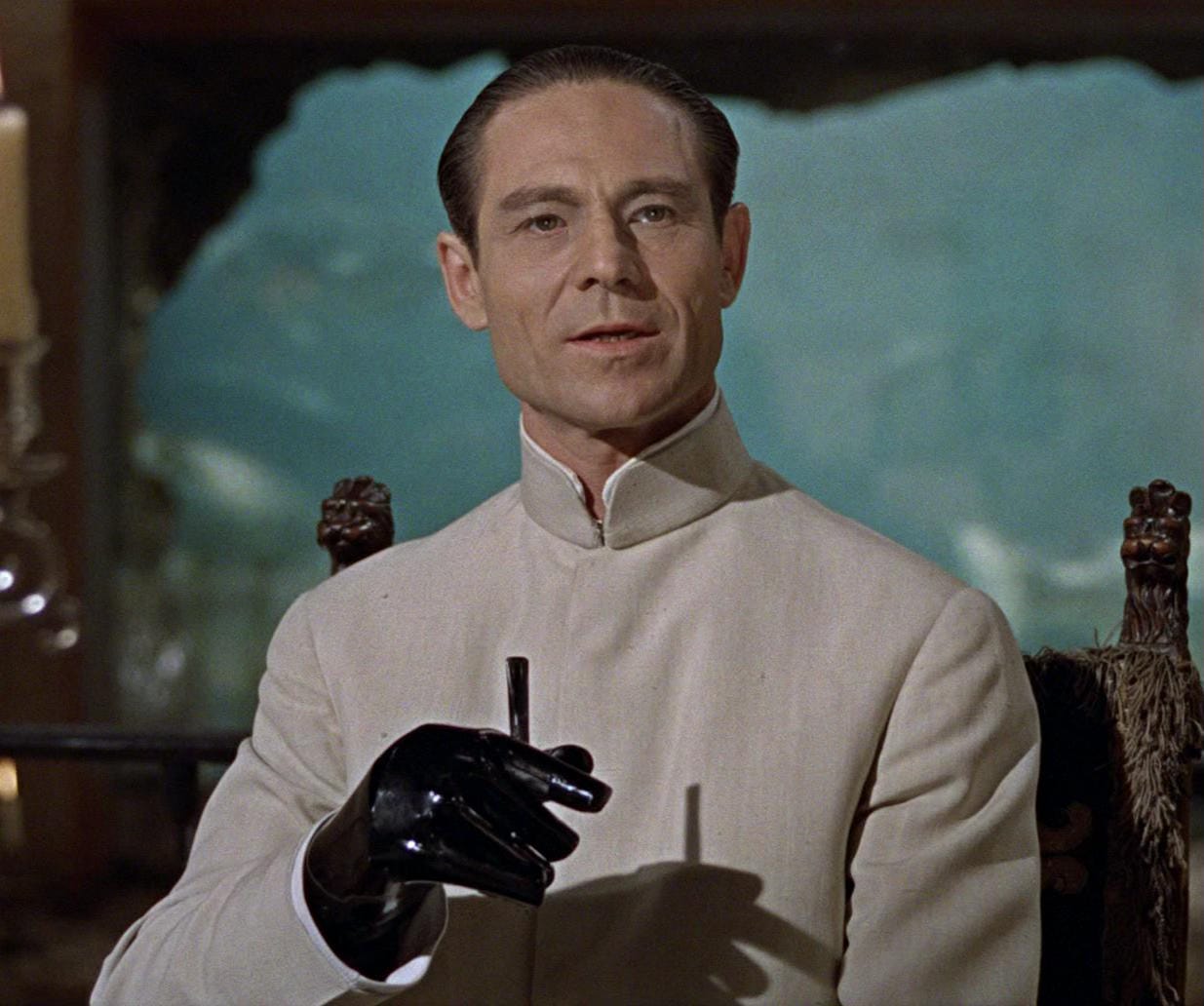Universal Exports: Dr. No
"World domination. The same old dream. Our asylums are full of people who think they're Napoleon. Or God."
I’m kicking off this series with a discussion of the film that started it all—1962’s Dr. No. The first entry into the James Bond film series, directed by Terence Young, is the film that launched one of the longest-lasting series in cinematic history. Famously starring Sean Connery, Dr. No goes a long way in establishing many of the archetypes and hallmarks of the Bond films that would follow. While it’s certainly got its flaws and at times can be rough, it’s an important film in terms of presenting James Bond as a cinematic character and, really, changing the trajectory of movies in general.
It’s been a long time since I’ve watched Dr. No, and what I found myself really noticing in this re-watch are the seams and limitations of the film. By the time we get to even a Connery film like Thunderball, you’re dealing with a degree of spectacle and production design that’s pretty substantial. I don’t necessarily think that’s a bad thing as the bloat of some of the Roger Moore and Pierce Brosnan ones hold them back. Not surprisingly, the car chases (like the one in the mountains of Jamaica) or action scenes in Dr. No seem… slight or underdeveloped. The scene in which Bond, Quarrel, and Honey Ryder encounter the “dragon” is filmed in darkness and thus it is tough to really perceive what is happening. Even the final fight between Bond and Dr. No himself feels very quick and ragged. There’s something about it that’s refreshing as it’s worth remembering these films we’re about espionage and not action at the beginning (something we need to be reminded of more than 50 years down the road).
There are moments in Dr. No that feel like you’re watching a play in the “realism” (a strange thing to say about a film centering on a British secret agent). Bond securing his hotel room in Jamaica as well as checking to see that it has been searched over has a slowness or smallness that jumps out when seen through our modern eyes. I also think about the moment Bond escapes from the prison cell Dr. No has put him in—the lack of music, the way in which Bond seems to be physically beaten up— and it’s kind of surprising (until we get to the Craig films where that kind of physical pain is common place. All of this isn’t a negative exactly nor does it take away from the film’s entertaining qualities, but it’s a bit of a shock to see the first Bond film have some things that feel like what the series was striving for in the 21st century.
Dr. No is a bit hamstrung by simplistic portrayals of characters like Quarrel (as the reductive portrayal of a Caribbean man) and Honey Ryder (Ursula Andress, as the first Bond girl, possessing a kind of innocence and lack of agency that’s a bit problematic). Obviously, all these Bond films are products of the times in which they were made and thus possess elements that don’t fit with our modern sensibilities.
Encountering these things is just the proverbial cost of doing business. But I do think there’s a lot of it in Dr. No and perhaps it’s another reason why it’s one I haven’t watched in a while. It’s something we’ll certainly be confronting in those early films in the series.
While there was clearly room for the series and the films to develop into what it would eventually become, one thing that works coming out of the gate is Sean Connery’s performance as Bond. I feel like Connery had this conception of Bond as cool, detached, suave, but also intense when needed. It’s a slightly different conception of Bond than what you get in Fleming’s novels, but that’s understandable (at that point in time and for a wide cinematic audience, you’d need to sand down some of those rough edges that Bond on the page possessed) and also… a lot it feels in keeping with Fleming’s creation.
Yes, you get some one-liners that feel like something different (“I think they were on their way to a funeral”), but the scene with Professor Dent coming to kill Bond only for Bond to shoot him when he’s out of bullets, that feels like something different from the cinematic Bond (as we came to know him).
I think Bond’s fashion sense is still coming into its own—there are some nice suits worn by Connery but not much that’s as distinctive as what we’ll get in the next films. This one, which anticipates some of his ensembles in From Russia With Love, is perhaps my favorite:
Speaking of introducing and establishing certain tropes, Joseph Wiseman’s depiction of Dr. No sets up a lot of what we’ll get with villains in these films between his metal hands and the Nehru collared jacket (and, of course, the desire for world domination as part of the SPECTRE organization). Dr. No’s scheme, using high powered radio jamming to stop a Project Mercury launch in America, seems spot on given that this was released right in the midst of the Space Race with all the attendant anxieties that came along with it.
There’s also the introduction of many of the hallmarks of the series—the opening gun barrel sequence, the iconic James Bond theme; “Bond, James Bond”; the vodka martini, “shaken not stirred”; the presence of CIA agent Felix Leiter (played by Hawaii Five-O star Jack Lord); the appearance of Bernard Lee’s M and Lois Maxwell’s Miss Moneypenny—that give you the sense that there was a vision to this as a real series. I also want to call attention to the use of Jamaica as a location (where they filmed) and some of the beautiful vistas that emerged from that as well as the excellent production design by Ken Adam (especially in Dr. No’s lair). These are things the Bond franchise would become known for and they’re very much present at the beginning.
Ultimately, my sense of Dr. No is that it’s an important film and has a lot of what we’d come to identify with the James Bond films and yet it’s not as strong and good as some of the subsequent entries with Connery. The next film in the series—From Russia With Love—is one of my favorites and is where you see the production team really put it together and make it clear they know what they’re doing.







